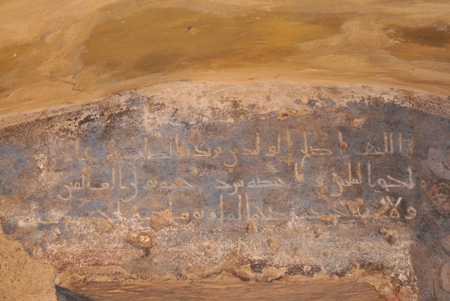Early Islamic site discovered in Jordan
15/7/12 .- http://www.medievalists.net
Recent conservation work at Qusayr ’Amra, a UNESCO World Heritage Site 85 kilometers east of Amman, has revealed the name of the Umayyad prince who commissioned the construction of the building. The conservation work is being conducted by the Department of Antiquities of Jordan, the Istituto Superiore per la Conservazione ed il Restauro in Rome, and World Monuments Fund.
The site is a small building dating to the Umayyad period and is known for its mural paintings. Gazelle and wild donkey hunts, dances, musicians, court scenes and allegories, and zodiac symbols are all painted on interior surfaces.
The inscription,replique montre which previously could not be read due to accumulated dirt and previous unsuccessful cleaning attempts, is an invocation to Allah beginning with the formula “Allahumma aslih al-Walid ibn Yazîd” (“Oh God! Make al-Walîd ibn Yazîd virtuous”). This inscription was painted in white above a window in old Kufic alphabet without any diacritical dots. Sections of the three-line inscription are still being translated.
Walid Ibn Yazid, or Walid II, was an Umayyad caliph who reigned for a little over a year, from February 743 to April 744. The inscription, however, is missing the typical expressions used for Umayyad caliphs (“God’s servant,” “Prince of the Believers”), indicating that it was painted when Walid was still a prince, during the reign of Hisham bin Abd el-Malik (723–743).
The current conservation campaign at Qusayr ’Amra began in 2009 with the goals of consolidating the structure and cleaning the mural paintings. The latter activity is revealing brilliant colors and unexpected details that can be seen now for the first time, almost 1,300 years after the site was abandoned following the Abbasid revolution, which resulted in the defeat of the Umayyads in 750. Due to its artistic and architectural significance, Qusayr ’Amra was inscribed on the UNESCO World Heritage List in 1985 as an exceptional testimony of Umayyad civilization and figurative art. In 2008, Qusayr ’Amra was included on the World Monuments Watch to call attention to the importance of the site and its conservation needs.
The site is a small building dating to the Umayyad period and is known for its mural paintings. Gazelle and wild donkey hunts, dances, musicians, court scenes and allegories, and zodiac symbols are all painted on interior surfaces.
The inscription,replique montre which previously could not be read due to accumulated dirt and previous unsuccessful cleaning attempts, is an invocation to Allah beginning with the formula “Allahumma aslih al-Walid ibn Yazîd” (“Oh God! Make al-Walîd ibn Yazîd virtuous”). This inscription was painted in white above a window in old Kufic alphabet without any diacritical dots. Sections of the three-line inscription are still being translated.
Walid Ibn Yazid, or Walid II, was an Umayyad caliph who reigned for a little over a year, from February 743 to April 744. The inscription, however, is missing the typical expressions used for Umayyad caliphs (“God’s servant,” “Prince of the Believers”), indicating that it was painted when Walid was still a prince, during the reign of Hisham bin Abd el-Malik (723–743).
The current conservation campaign at Qusayr ’Amra began in 2009 with the goals of consolidating the structure and cleaning the mural paintings. The latter activity is revealing brilliant colors and unexpected details that can be seen now for the first time, almost 1,300 years after the site was abandoned following the Abbasid revolution, which resulted in the defeat of the Umayyads in 750. Due to its artistic and architectural significance, Qusayr ’Amra was inscribed on the UNESCO World Heritage List in 1985 as an exceptional testimony of Umayyad civilization and figurative art. In 2008, Qusayr ’Amra was included on the World Monuments Watch to call attention to the importance of the site and its conservation needs.
Noticias relacionadas
- Early Egyptian Islamic site, Istabl Antar, in dire danger
- More skeletons discovered at medieval site in Edinburgh
- Early Christian baptismal fonts found at ancient fortress site in Bulgaria’s Byala
- World Archaeological Congress, Jordan, 14-18 January, 2013.
- Egypt's languishing Islamic antiquities
Comenta la noticia desde Facebook
Comentarios
No hay comentarios.
Para escribir un comentario es necesario entrar (si ya es usuario registrado) o registrarse

